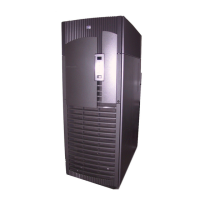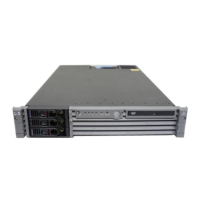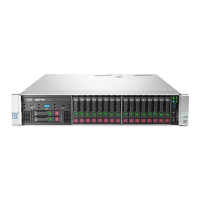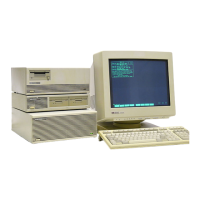11-4 Chapter 11
SCSI Peripherals and I/O Information
Configuration
1. HP's current implementations of SCSI supports eight devices consisting of one or more device
adapters (Initiators) and up to seven peripheral devices (Targets) on the 50-pin busses, and up to 16
Initiator or Target devices on the 68-pin busses.
2. All SCSI buses must be terminated at both ends with an appropriate 50-pin or 68-pin ACTIVE
terminator. (see the associated part number list). The single-ended SCSI bus is .8 meters long.
3. Single Ended vs. Differential
There are two structural alternatives available for host/device interconnect, each of which are
mutually exclusive within a system.
a. Single Ended - is a terminated bus which cannot exceed 6 meters including all internal and
external cabling. (50-Pin Bus, Internal = Flat Cable, External = High or Low density connector,
shielded cable) (MFIOC Internal SE-SCSI Cable length = .8 meters)
b. Differential - is a terminated bus which cannot exceed 25 meters including all internal and
external cabling. (68-Pin Bus, Internal = Flat Cable, External = High density connector,
shielded cable) (HP-HSC Internal F/W-SCSI Cable length = .8 meters)
4. There must be at least one source of TERM POWER (usually host adapter supplied). It is
acceptable to have more than one source of TERM POWER on a SCSI bus. If two or more sources
of TERM POWER are available, the second source should be at the opposite end of the bus from
the host adapter.
NOTE Fast Wide SCSI disks internal in the system ALL provide TERM POWER to the SCSI
bus.
5. The first host adapter SCSI address on either internal bus should be set to 7.
6. Priority is determined by SCSI address. Address 7 is the highest priority and address 0 is the lowest
on the 50-pin bus or address 8 on the 68-pin bus.
Highest (7,6,5,4,3,2,1,0,15,14,13,12,11,10,9,8) Lowest
7. Parity on the SCSI bus is normally enabled by a jumper on the devices. All currently supported
system devices support parity generation. If any new device is added on a SCSI bus which does not
generate parity, all devices on that bus must be set to ignore parity or this device must be on it's
own dedicated SCSI bus.
